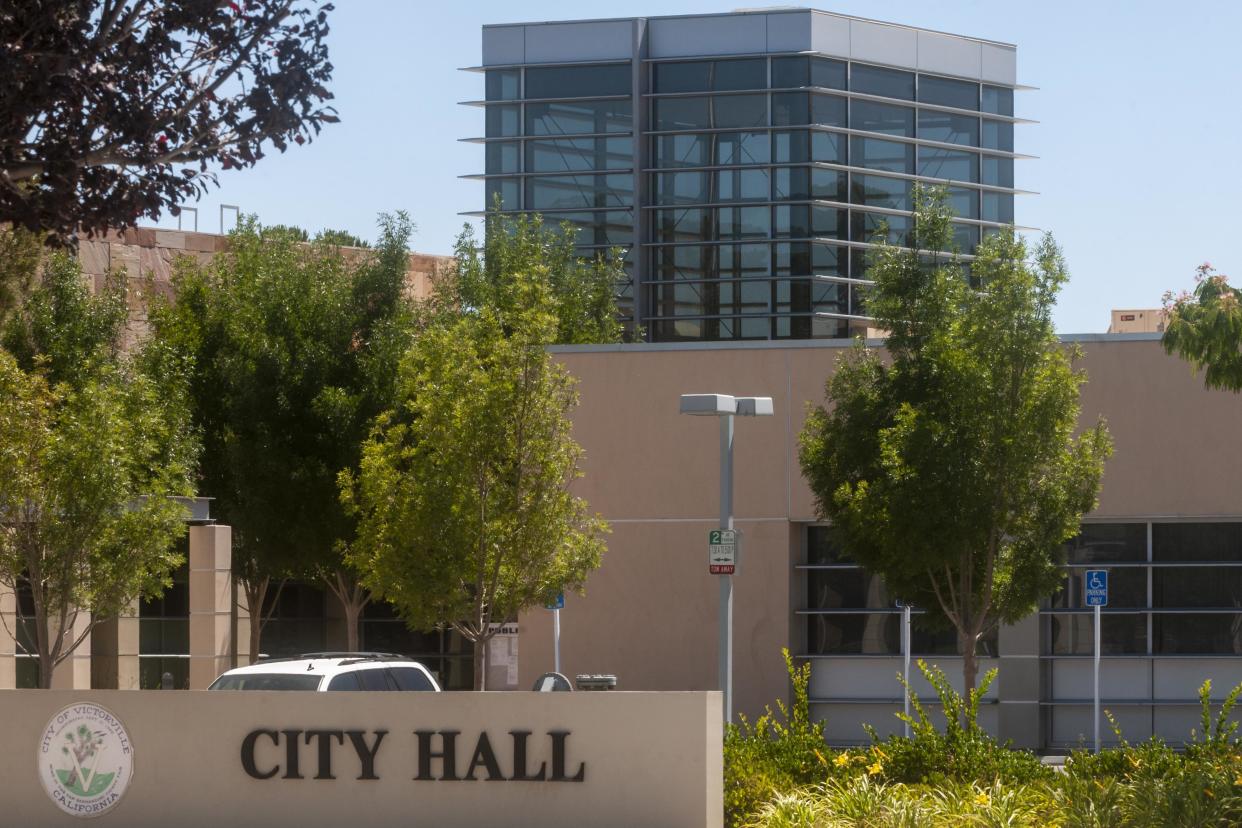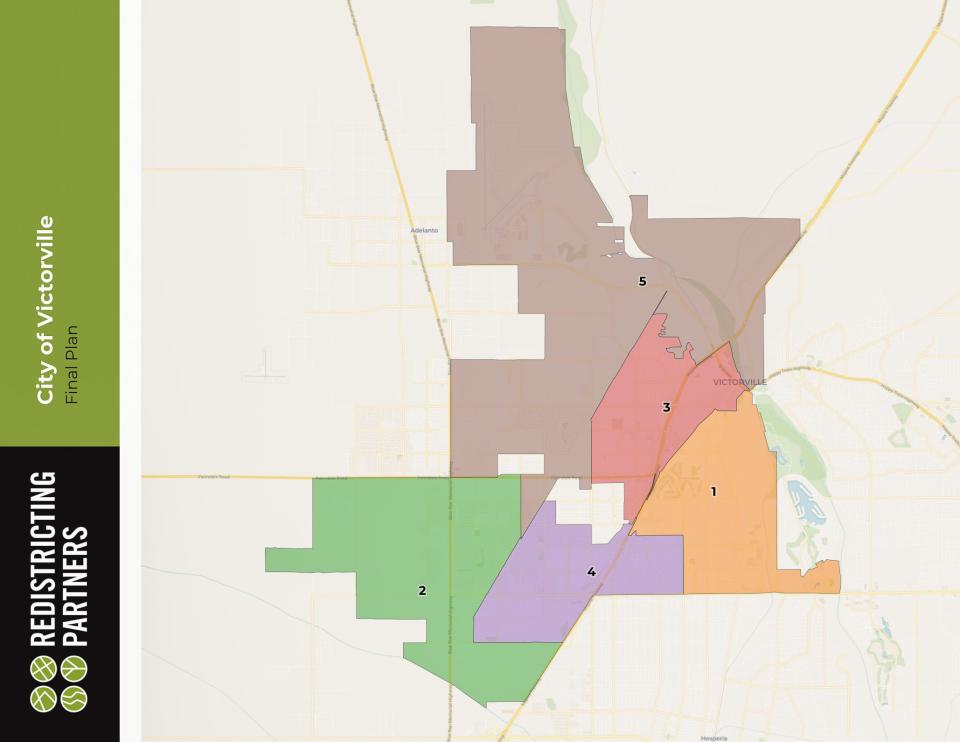Victorville adopts district-based election system months after lawsuit threat

Victorville residents will vote in the city’s first-ever district-based elections next year after a council decision to avoid a potentially costly lawsuit.
The City Council on Wednesday unanimously adopted an ordinance and approved a map that carves the city into five voting districts.
This means a city voter will only cast a ballot for a council candidate who also resides in the district they live in.
For local stories that matter, subscribe today.
Victorville formerly used an at-large election system where all residents living in city boundaries could vote for a candidate running for an open council seat.
The districts are made up of:
District 1: Easternmost district, which covers Victor Valley College, Green Tree Golf Course, and southeast portion of Old Town
District 2: Southwest district, which covers areas surrounding Highway 395, the Golden Triangle, Eagle Ranch, and Sunset Ridge
District 3: Central district which covers Hook Park and most of Old Town
District 4: Covers Victor Valley Mall and areas nearby
District 5: Northernmost and largest district geographically, which covers Southern California Logistics Airport and some areas surrounding Village Drive
In November 2022, voters living in Districts 2 and 4 will vote for a council member candidate. Public records show Mayor Debra Jones currently lives in District 2, and no one on the council lives in District 4.
Electing representatives for the other three districts (1, 3, and 5) will occur in 2024. Councilmember Blanca Gomez currently lives in District 1, Councilmember Liz Becerra lives in District 3, and Mayor Pro Tem Leslie Irving lives in District 5.
City spokesperson Sue Jones said council members “remain at-large representatives for the entire City of Victorville” until they’re up for re-election.
Lawyer claims state voting rights act violation

The transition to districts marks the end of a process that took almost three months and was spurred by an attorney’s letter sent to the city in August.
In the letter, the Walnut Creek-based lawyer Scott Rafferty — representing a group called Neighborhood Elections Now — alleged that the city's at-large system was violating the California Voting Rights Act by “diluting the influence of Latino voters.”
The CVRA, passed in 2001, bans the use of an at-large election “if it would impair the ability of a protected class, as defined, to elect candidates of its choice or otherwise influence the outcome of an election,” according to the bill.
More than half, or 55.5%, of Victorville’s population of around 131,000 Latino descent, U.S. Census data shows.
City officials disputed the claim — given two Latinas and an African American serving on the council — but said winning a battle in court was unlikely.
In September, City Attorney Andre de Bortnowsky advised the council that public entities that have tried to fight an allegation of a CVRA violation “have either lost or have agreed to make the transition” to district-based elections, with some spending “millions of dollars.”
Critics of the CVRA have said the law makes it too easy for plaintiffs to sue as they only need to show that “racially polarized voting” exists. Plaintiffs are also entitled to recover attorneys’ fees and costs whether they win or lose.
News reports show Rafferty has sent letters threatening litigation over alleged CVRA violations to other cities, such as Montebello and Brentwood, and school district boards.
Data for the voting map shows that Districts 3 and 4 would have a Latino Citizen Age Voting Population greater than 50%.
Final costs of switch not yet known
After the council agreed to switch to districts in September, the members approved appropriating $200,000 from the general fund the next month to cover the costs, including hiring a demographer, legal fees, and public outreach.
According to a staff report, Victorville spent $110,000 in a contract with the demographer firm Redistricting Partners.
Spokesperson Jones said she could not say how much the city had spent in total “because we still have final invoices yet to be received and closed out.”
“Our expenses, not including any legal fees to Mr. Rafferty, will be within our $200,000 allocation for the districting process,” she added in an email. “We have not yet received any invoices from Mr. Rafferty. His legal fees are not to exceed $30,000.”
During a meeting on adopting a district map last week, Rafferty praised the council last week and said the new election system would “lead to a stronger Victorville” and allow council members to represent residents better.
“It means that you guys have a new boss in your neighborhood that you’re accountable to,” he said. “You’re going to behave yourselves better.”
Others weren’t as positive about the switch.
“It’s a forced issue upon a city whose electorate never voted to have this and wasn’t that important an issue since it’s been 20, 21 years since that law was passed,” city resident Maggie Martin said, referring to the CVRA. “I think it’s tacky.”
Daily Press reporter Martin Estacio may be reached at 760-955-5358 or MEstacio@VVDailyPress.com. Follow him on Twitter @DP_mestacio.
This article originally appeared on Victorville Daily Press: Victorville adopts district-based election system after lawsuit threat

